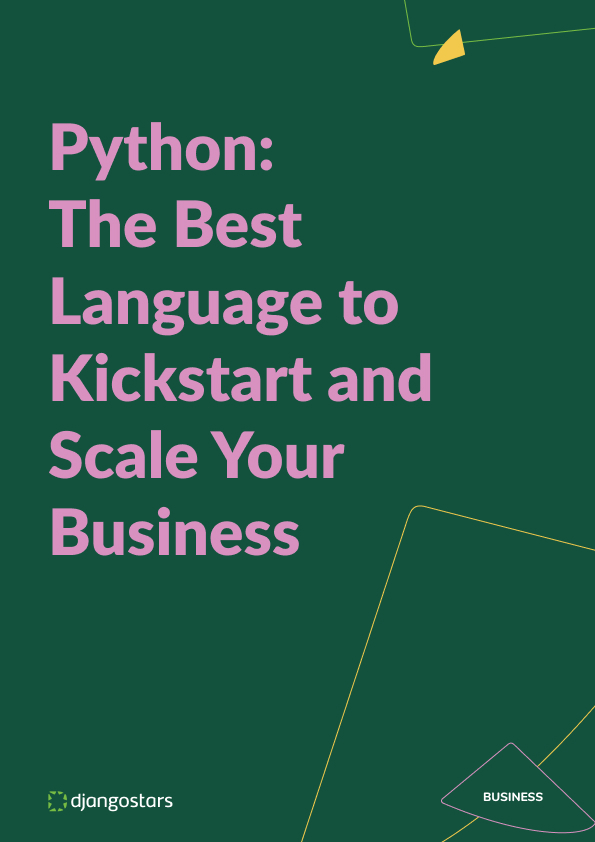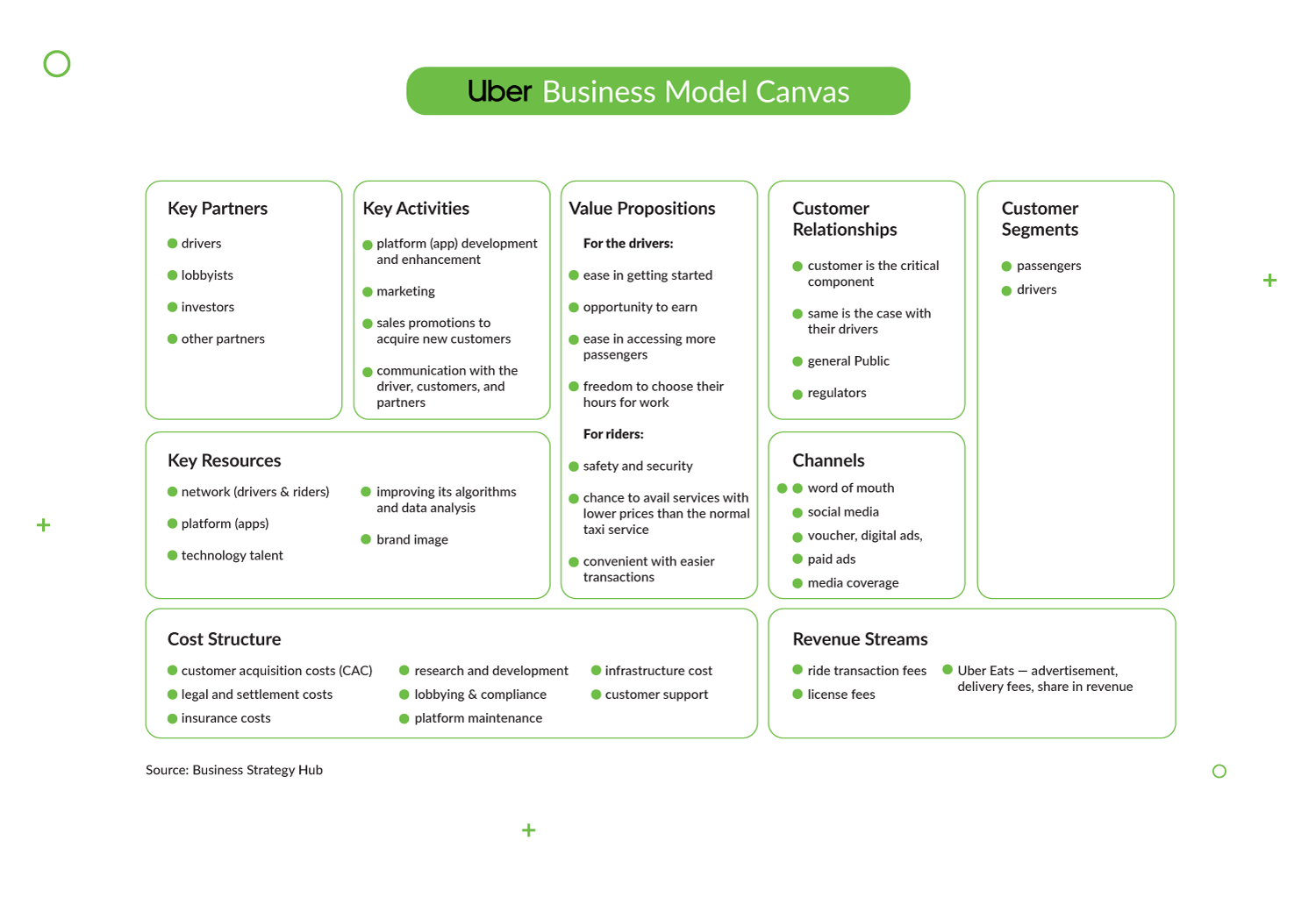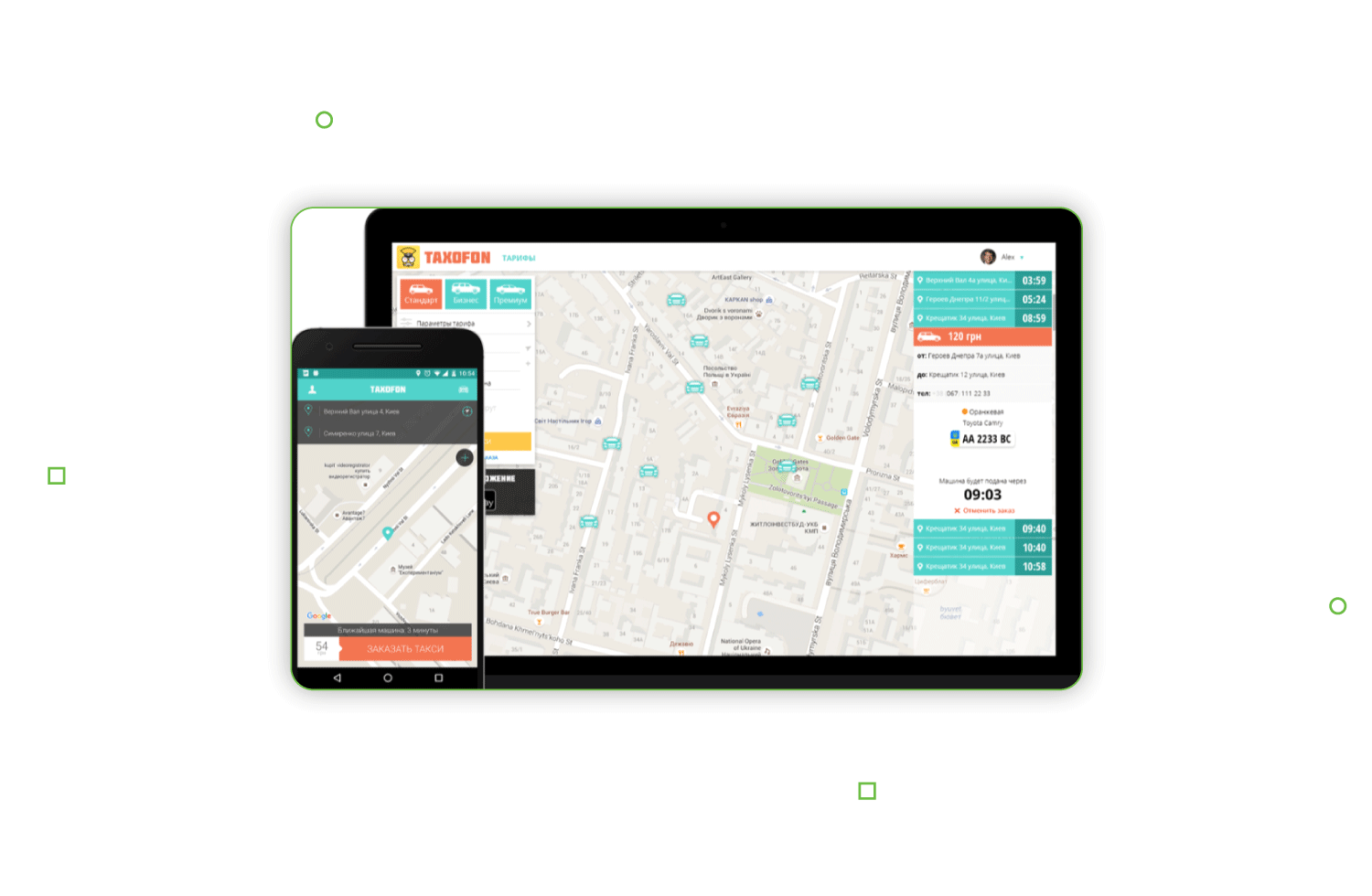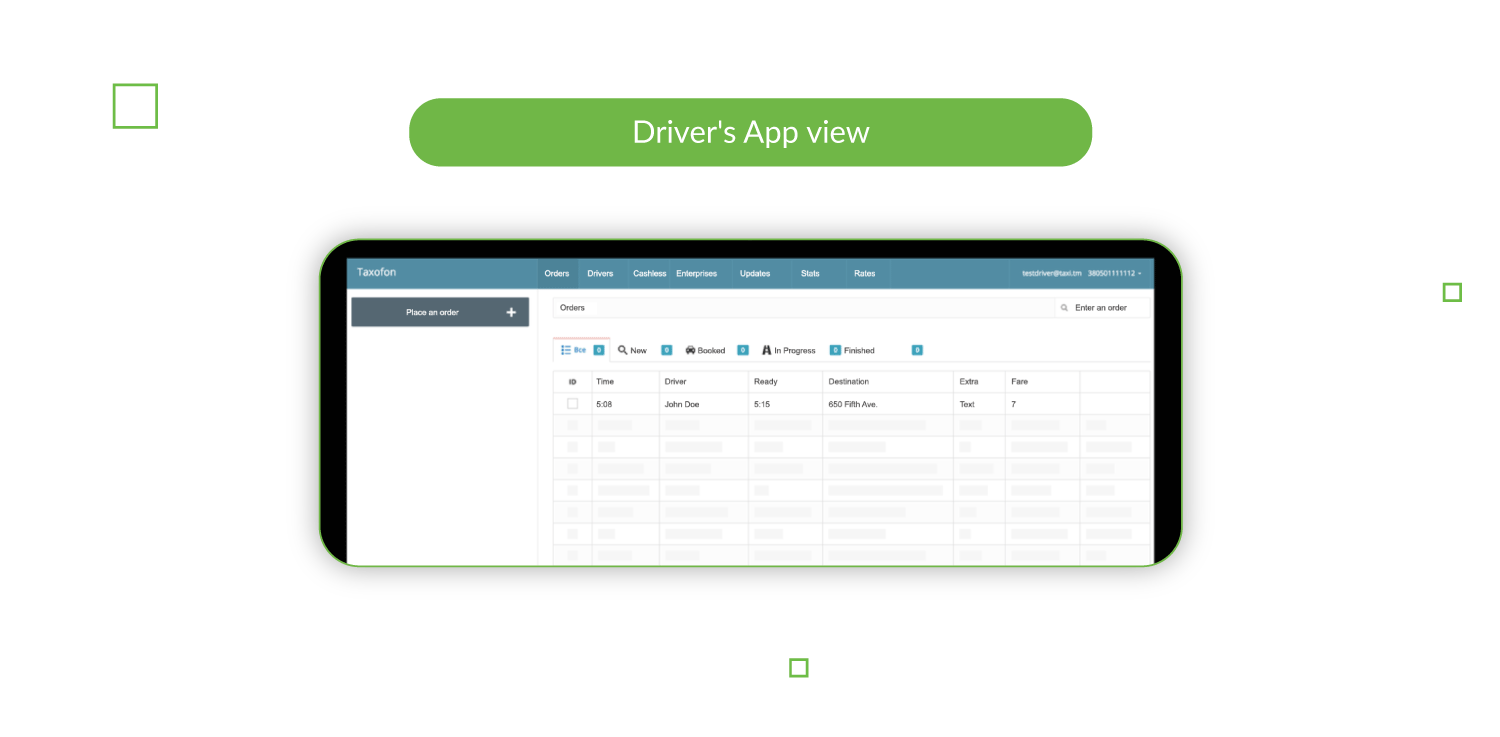How to Build a Taxi App like Uber in 2024: Features and Cost

Over the past five years, app-based ride-hailing services have displaced traditional taxi companies. They offer convenience, transparency, security, sharing, competitive pricing, and attractive offers, and the overall cost of taxi application development is becoming more affordable as more advanced technology becomes available — features that were virtually unheard of earlier.
Uber, the pioneer in disrupting the passenger transportation industry, was founded in 2009 and changed taxi rides forever. In just over a decade, it has established itself in 700+ cities on six continents, according to S-1 SEC filings. While the competition is catching up, Uber owns 65-70% of the US market. On an average day, it makes a staggering 14 million trips globally!
Curious to know what it costs to create a taxi app like Uber, and what’s involved in building one? Or maybe you’re more interested in any details related to the creation of logistics products? Our team also has experience developing food delivery apps, including for Fortune 500 companies. Visit our case studies to learn more.
In this article, our transportation software development team will break down the seemingly overwhelming process of building a taxi app into simple steps such as market research, required features, planning development in stages, and estimating costs.
Taxi App Market – A Global Perspective
Before we delve into the details of how much it costs to develop a taxi app, let’s examine this market. In the past decade, many app-based cab companies have appeared worldwide. They offer customized services that cater to the demands of specific geographies. User penetration is on the rise, and experts predict that half of global taxi rides will be ordered via online channels in the next five years.
According to Statista, the taxi app market generated $154 billion in 2023. The market is expected to increase, having a healthy CAGR of 7.5%. By 2028, experts predict the market’s revenue will hit $217.5 billion.
China, with a user penetration of 36.4%, leads the global revenue generation market. It’s expected to make $55 billion in 2020, followed by the US ($41 billion) and India ($26 billion).
Uber has taken rapid expansion steps and leads the way, having served over 75 million customers in 2018. However, it is not unchallenged. It faces constant competition from localized players such as Didi Chuxing, Grab, Lyft, Ola, etc. China’s Didi Chuxing drove Uber out of the country and is now gaining ground on its turf via an investment in Lyft.
As populations migrate towards cities, many transportation services companies have elaborated on the taxi app model and added different layers to it. Apps that provide self–driving cars, bike taxis, and scooter rentals have carved their niche in the crowded transportation market. In addition to being affordable, these mediums reduce congestion in cities, control pollution, and are viewed as sustainable, environment-friendly options.
Read Also: Eight Latest Logistics Trends in the Supply Chain Industry
Let’s review the features that drive these ideas and make a taxi app run like a diligent, accurate, and efficient machine.
How Much Does It Cost to Build a Taxi App?
So, how much does it cost to make a taxi app? Here, we share a detailed roadmap that allows you to calculate the approximate taxi app development cost. It significantly depends on the application’s complexity, number of features, and development rate.
Here are some basic features of a taxi app and the time needed to develop them. We calculated their development cost if the hourly rate was $50.
| Feature | Required time, hours | Price, $ |
|---|---|---|
| Registration and profile | 110-150 | 5,500-7,500 |
| Booking system | 100-130 | 5,000-6,500 |
| Search and booking history | 20-30 | 1,000-1,500 |
| Mapping and geolocation | 50-70 | 2,500-3,500 |
| Payment integration | 100-130 | 5,000-6,500 |
| Notifications | 30-50 | 1,500-2,500 |
| Listings and ratings | 20-40 | 1,000-2,000 |
Keep in mind: it’s only basic features. If your app requires unique features, the development time may double. Moreover, programmers must spend 150-200 hours creating a convenient and user-friendly application appearance, over 200 hours for backend development, 150 or more hours for web development, and approximately 100 hours for QA.
Designing a single-platform basic taxi app would cost between $20,000-50,000. However, a comprehensive Uber-like app development costs approximately $50,000-100,000 or even more if you add some unique features.
NB: all prices are relevant if development rates are $50 per hour. Such rates are usual for Eastern Europe, Asia, or Latin America teams. But the total amount may be much higher if you hire a development company from Western Europe or the USA.
Core Features of a Taxi App like Uber
To learn how to create an app like Uber and determine how much to create an app like Uber, you need to have a clear understanding of what features you will add to it.
A taxi app is a digital engagement platform that lets users access a host of services other than just taxi bookings. Uber, the most valuable online taxi booking company, has shown the way by developing and integrating state-of-the-art features that make it stand out.
Here are the basic features every taxi booking app should include:
Booking Rides
This feature is the most used, so you need to design it with all user groups in mind. While digital natives will figure out your app on their own, you need to connect with the elderly instantly and ensure they won’t be intimidated by the technology.
Booking needs to be enabled in a minimal number of steps – as in, all a user needs to do is to fill in his or her from and to locations. It would be even better if your app could read their current location as the default from point.
Fare Calculations
There are different approaches to calculating fares. You can opt for a flat fee based on distance and type of car chosen or take traffic conditions into account and add a component to reflect ride time. Based on your pricing model, a backend algorithm will calculate the total trip fare. Leading apps do this calculation beforehand and give the users an approximate fare based on the taxi type, distance, traffic conditions, and availability.
Displaying Trip Details
To win customer trust and maintain transparency, you need to give them a cost estimate of their trip in advance. Passengers like to have an overview of their trip before they confirm it. Details, such as which types of taxis are available, how much each will cost, what the expected ride time is, and how far away the driver is, will give them the available options before they confirm the ride.
Finding a Driver
Once a customer agrees to the trip details and confirms the requirements, the request is assigned to the nearest available driver. It works differently in some regions, as the request is floated to all drivers until one of them accepts it. Either way, the objective is to connect the passenger to a driver. While the app finds a nearby driver, it’s important to keep the customer engaged and show a live map of the nearby taxis so they know what’s going on.
Confirming the Trip
The driver does not know the trip details unless they are assigned to a new order. Once assigned, they have the option to reject the trip, in which case the ride will be assigned to the next nearest available driver. Take a balanced approach and have business logic in place that discourages too many rejections by a driver in a given period.
Connecting Passenger to Driver
The driver only knows the trip details if they take a new order. The passenger gets the driver’s details (taxi number, car make, estimated arrival time, driver rating, real-time location) and vice versa. This is the time when they discover each other’s locations so that the driver can start moving towards the pick-up point and the passenger can know the driver’s ETA.
Finding Passengers and Routes by GPS
GPS monitoring shows an exact user location on the map, so a driver doesn’t even need to contact them directly. Moreover, integrating Google Maps or similar systems will help drivers navigate all roads and find the fastest route to the destination point.
This feature increases passengers’ loyalty and allows drivers to complete more trips during working hours.
Enabling Co-Passengers
It’s a brilliant idea for expensive trips — for example, to the suburbs or between neighboring towns. If users want to save money, they may find travel companions and split the bill. The feature would also be convenient for people going to a particular location together and willing to simplify the payment process.
The advantage is that a user has to enable the feature — the app will do the rest, even splitting the bill.
Multiple Drop-Off Points
If a driver picks up a few people who need to get to various places, the multiple drop-off point feature will help a driver build the fastest and most convenient route.
Payment
This can be done in a number of ways. Digital payments are gaining popularity, and digital payment integration must be an important component of your overall taxi app development costs. Your app should be able to acknowledge payments through QR codes, bank cards, mobile wallets, net banking, and good old cash. (By the way, a custom QR code generator can help you create various QR Codes for your business.)
Rating
Once the trip is over, the passenger and driver can rate each other. It’s helpful to keep the system transparent. A consistently good or bad rating for a driver will affect future trips. The highest-rated drivers can be rewarded with more rides and earn higher commissions. On the other hand, drivers with bad ratings can be warned and re-trained. It helps the company retain good drivers, train those who need improvement, and eliminate those who fail to display the expected levels of professionalism.
At the passenger’s end, a highly rated passenger can be rewarded through better deals and preferential treatment during ride assignments. A passenger with a history of bad behavior and a low score will have a tough time finding a driver, as drivers can reject their booking request.
Here, we share our best practices, technical solutions, management tips, and every helpful insight we’ve got while working on our projects.

Technological Integrations For Building Taxi Apps
When creating a strategy for how to develop a taxi app like Uber, an entrepreneur needs to consider that apps for iOS and Android require different stacks of technologies.
The three must-have integrations for a custom taxi app are geolocation, push notification, and payment integration. Here are the most required technologies to adopt them:
| iOS | Android | |
|---|---|---|
| Geolocation | Apple MapKit, CoreLocation | Google Maps Platform, Mapbox |
| Push Notifications | Apple Push Notification Service (APNS), Firebase Cloud Messaging, Twilio, Nexto, Plivo, Sinch | Google Cloud Messaging (GCM), Firebase Cloud Messaging, Amazon Simple Notification Service, Twilio, Nexto, Plivo, Sinch |
| Payment | Apple Pay, PayPal, Stripe | Google Pay, PayPal, Stripe |
These technologies are commonly used in taxi app development. But it doesn’t mean the other ones can’t be adopted. For example, payment options depend solely on the country, so before designing an app, a team should investigate which one would be useful for the target audience.
As for programming languages, iOS apps are mainly written in Swift, and Android ones usually use Kotlin. For the apps’ backend, vast variety of languages may be used: Python, Java, Ruby, PHP, and about a dozen others.
The Stages of Taxi App Development
Here, we’re talking about how to build a taxi app. Given Uber’s complex yet efficient workflow, this thought can be intimidating. However, your job will be simpler if you break it down into different stages, plan each component/module separately, and then hire taxi app development services to execute your plan.
Stage 1: Market Research
The first step of Uber-like taxi app development is research because every market has a different dynamic that changes over time. Your research will help you understand consumer preferences, demographics, travel patterns, and existing solutions in your proposed market. You will then get to know the pain points, which can be an opportunity for you to define the precise segment you need to tap into. Here’s how geographical regions and demographics can shape your ride offerings:
- Offer shared rides between well-defined residential and commercial regions.
- Launch bike taxis and self-drive scooters around educational institutions.
- Offer long-term rental services for metropolitan cities with a young working population.
- Offer 4/8/12 hour packages for regions with dense commercial and office spaces.
Stage 2: Develop a Business Model Canvas
A business model canvas is a snapshot of your partners, the value proposition for each stakeholder, core competencies, value proposition, cost structure, revenue stream, customer segments, and marketing media. You have to take a 360-degree view of your app and drive it forward by balancing all the parameters.

A revenue model identifies potential sources of revenue and works out the pricing structure for each. After all, your business must be able to recover the cost to make a taxi app like Uber as soon as possible. After that, there should be enough revenue generated to offset the operational costs and generate returns on your investment.
Uber has three revenue generators:
- Drivers – a 20%-30% charge on each bill
- Passengers – a flat fee per booking and a cancellation fee for each canceled ride
- Promotions – promoting other brands through app and fleet
Stage 3: Taxi App Development
It is the most important step of your taxi app development process. We recommend approaching an established taxi booking app development company and building native apps from scratch instead of using prefabricated templates. It will ensure your app works well with all operating systems and has customized configurations for each. You typically require three interrelated components:
Passenger App
Developed for passengers, this app should have intuitive features. Depending on the technology and platforms you choose, it will take between 500 and 700 hours of work to produce the following feature set:
- Registration – Allow registrations through all contemporary processes (i.e., email, social networks, and mobile numbers).
- Taxi booking – The core functionality includes location selection, booking request generation, review trip details and confirmations or cancellations.
- Payments – Give passengers the flexibility to pay the way they want (i.e., with mobile wallets, cards, direct bank transfers, and cash).
- Card details – Successful apps allow users to save their card details to be charged automatically without having to enter them for each payment.
- Fare calculator – The app should generate the fare automatically once a ride is over. This calculation should clearly break out the different fare components and taxes.
- Tracking – This feature lets users plan better, as they can see how far away a taxi is, its estimated arrival time, and its route.
- Notifications – Passengers don’t want to miss out on key events such as booking confirmations, taxi arrivals, the end of a trip, payment confirmations, etc. Enabling push notifications and sending SMS covers this. Vendors such as Twilio, Nexmo, and Sinch can do this for you.
- Ride history – A ride history helps users track their movements and access past invoices and common destinations for quick bookings.
- Driver’s review/rating – This incents drivers to behave and perform professionally and gives passengers a knowledge pool to check their driver’s history.
- Profile management – Passengers can change addresses and payment options, use a different mobile number, etc. Having this feature lets you capture their updated information and provide delightful service across locations.

Driver App
Drivers and partners will each have a different view of the app, as their requirements will differ from that of a customer. While planning your taxi app development costs, set aside approximately 300–400 hours for this module. It will include:
- Registration – This is used for recognizing a user and mapping his/her data. It can be similar to the passenger app, where users can register/log in using a social media account, mobile number – OTP combination, or his email ID and password.
- Status update – A driver needs to keep the app updated about their working hours.
- Accept/reject booking – Your driver needs the ability to accept or reject a booking whenever a new request comes their way.
- Booking history – It will help them track the destinations, the number of completed rides, earnings, etc.
- Notifications – These are required to remind drivers about their upcoming rides, ratings, targets, incentives, etc.
- Infographics – A neatly designed infographic will help drivers access and analyze their ride information (rides completed, earnings, hours available vs hours worked) for a specified period ( i.e., day, week, month, or quarter).

Admin App
It manages and monitors all app users (i.e. drivers and passengers). Using this app, you can run analytics and generate reports, which will help you structure promotions, marketing campaigns, and overall strategy. On average, you should set aside a total of 800-1000 hours of work for this module.
Stage 4: Deploying Your Taxi–Booking App
Now it’s time to push your taxi app like Uber out to users and deploy it in live environments such as the Google Play Store, Apple’s App Store, and other popular repositories. Make sure you do a thorough security audit and comprehensive penetration testing before planning a go-live. This will require further tuning to comply with the guidelines of the respective directories. You also need to raise awareness of the app through online/offline advertising channels so passengers know about your company.
Stage 5: Maintenance and Technical Support
Despite the best efforts of testers, bugs are bound to creep in. There can be compatibility issues with newer O.S. versions, and users might run into trouble using the app. In that case, you’ll need to deploy the latest security patches to keep your app safe from malware attacks. There should be a team of technical support experts dedicated to this purpose.
How We Can Help with Taxi App Development Process
Django Stars’ team has extensive experience developing custom geo-based apps for various market fields worldwide.
Among our studies, you may find developing an application for a food service company from the Fortune 500 list. The designed application allowed the company to easily communicate with clients from multiple time zones and lead the fastest delivery ways in seconds. Moreover, with its help, the company improved the decision-making processes using AI-powered analytics features.
Also, we work with various logistics operators from the US and other countries. Our logistics apps can efficiently process thousands of delivery routes and improve them in auto mode if some conditions change.
We know how to develop an app like Uber using the most prominent technologies, including AI-powered features.
Summing It Up
Shared transportation is a booming business. More than half the world has yet to be penetrated, and with everyone looking for sustainable and affordable transportation in crowded cities, it’s a good time to build your own Uber app that provides them with options. Technology takes giant leaps every year, and it’s only a matter of time until artificial intelligence, machine learning, blockchain, and cloud computing will come together to power driverless cars and reduce costs to develop app like Uber further.
Now that you have an idea of the investment it takes to build a rideshare app, you can find your market niche and load your app with suitable features. We advise focusing on simplicity and creating a value proposition for the end-user rather than opting for sophistication.
If you’re interested in collaborating with the Django Stars team on your software project, feel free to contact us.
- How long does it take to develop a taxi app like Uber?
- The time it takes depends on several factors, such as the complexity of the app's features, the number of platforms it needs to support, and the development team's experience. Contact us to get a more accurate estimate for your specific project requirements.
- Can I build a taxi app without coding skills?
- You can use app builders and no-code platforms to create a basic taxi app without coding skills. However, for a feature-rich app with advanced functionalities, you will likely need to hire a professional development team with expertise in mobile app development.
- How can I make my taxi app successful?
Engage an experienced technical partner in the development of your taxi app, don't underestimate the importance of the market research stage and development of a business model canvas, and pay attention to the following:
- a user-friendly interface with an easy-to-use booking system
- competitive pricing and different payment options
- a high level of safety and security
- the use of effective marketing strategies to reach your target audience and promote your app
Also, don't forget about maintenance and technical support, and continuously improve and update your app based on user feedback and changing market trends.
- What are the challenges of building a taxi app?
- Some common challenges are related to gaining trust from both drivers and passengers, the need to comply with local regulations and laws, and the requirement to continuously update and improve the app to meet user needs and changing market trends. Additionally, there may be stiff competition from other well-established taxi apps. However, with proper planning and execution, it's possible to overcome these challenges and create a successful taxi app.







